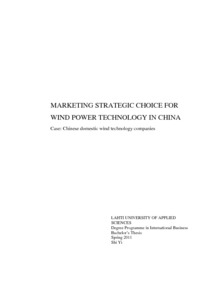Integration of Monte Carlo Risk Simulation into Cash Flow Optimization Processes : a case study in wind energy project
Rathnayaka, Ashen (2025)
Rathnayaka, Ashen
2025
All rights reserved. This publication is copyrighted. You may download, display and print it for Your own personal use. Commercial use is prohibited.
Julkaisun pysyvä osoite on
https://urn.fi/URN:NBN:fi:amk-2025060319998
https://urn.fi/URN:NBN:fi:amk-2025060319998
Tiivistelmä
The financial success of wind energy projects depends mainly on effective cash flow management, especially under market and environmental uncertainties. This research develops a practical simulation model based on Excel to illustrate the problem of financial risk management in such projects. The research objective is to present a simple and implementable modelling framework that can model the uncertainty in the cash flow forecasting process to help make better decisions during the project planning phase.
This study is based on project finance and risk management concepts, especially cash flow management, Monte Carlo simulation, and wind energy economics. A quantitative modelling based on probability distributions was developed using Microsoft Excel and Crystal Ball, where realistic parameters such as Weibull distributions with wind speed, energy unit price, installation cost, and energy production levels were used.
By implementing a Monte Carlo simulation, instead of providing a single estimate, a range of results can be obtained that clearly understand the impact of uncertain variables on NPV. Sensitivity and reliability analyses allow project managers to identify important financial variables, especially risk centres. This simulation model is proven to be helpful in financial planning, reducing uncertainty, and increasing the reliability of investment decisions.
This study is based on project finance and risk management concepts, especially cash flow management, Monte Carlo simulation, and wind energy economics. A quantitative modelling based on probability distributions was developed using Microsoft Excel and Crystal Ball, where realistic parameters such as Weibull distributions with wind speed, energy unit price, installation cost, and energy production levels were used.
By implementing a Monte Carlo simulation, instead of providing a single estimate, a range of results can be obtained that clearly understand the impact of uncertain variables on NPV. Sensitivity and reliability analyses allow project managers to identify important financial variables, especially risk centres. This simulation model is proven to be helpful in financial planning, reducing uncertainty, and increasing the reliability of investment decisions.
Kokoelmat
Samankaltainen aineisto
Näytetään aineisto, joilla on samankaltaisia nimekkeitä, tekijöitä tai asiasanoja.
-
Marketing Strategic Choices for Wind Technology in China : case: Chinese Domestic Wind Technology Companies
Shi, Yi (Lahden ammattikorkeakoulu, 2011)There are almost 80 wind turbine manufacturers in China. However, the supportive government policies are the fact behind the rapid growth of those case companies. In reality, there are less than 10 Chinese wind turbine ... -
Marketing strategic choice for wind power technology in China : case: Chinese domestic wind technology companies
Shi, Yi (Lahden ammattikorkeakoulu, 2011)There are almost 80 wind turbine manufacturers in China. However, the supportive government policies are the fact behind the rapid growth of those case companies. In reality, there are less than 10 Chinese wind turbine ... -
Sizing and Utilising Hydrogen Storage for Excess Wind Power: a case study: EPV Energia wind farm Torkkola, Vaasa, Finland
Laurén, Fanny (2022)To combat global warming and climate change, energy generation must move from non-renewable to renewable. An energy system with purely renewable energy generation comes with its challenges as the dispatchability of renewable ...



